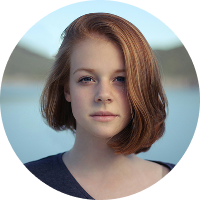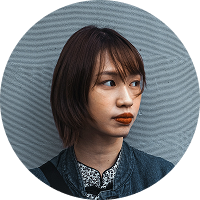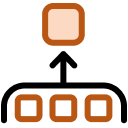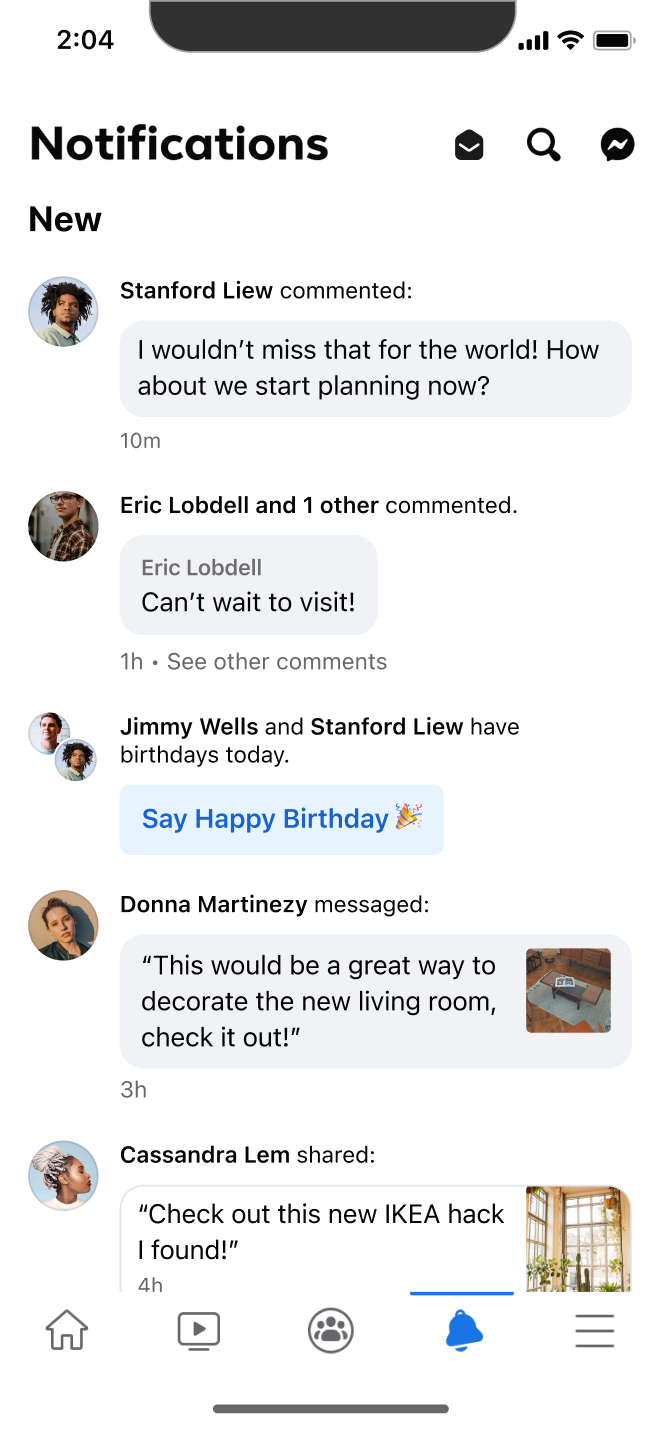the TLDR;
Project Summary
I partnered with the Facebook Notifications team to create a new vision that prioritized user needs while supporting growth goals. As the sole product designer, I developed platform principles and a more flexible notification design with features that improved relevance and enabled richer user signals for future personalization.
📦 THe problem
Like Email, but not
Upon onboarding, I found the team focused on speed of releases over driving user value. And while the team touted increasing sessions starts by almost 20% half-over-half, upon closer inspection, users engagement was dropping. Through user interviews, I found users felt underwhelmed saying notifications felt dated or misleading.
“I have trouble prioritizing what to read first, I see too many new blue notifications.”

M, 29
“There’s too much clutter on the page. I just want the update, it feels dated.”

F, 34
“I tap and landed somewhere I didn't expect."

F, 20
One user problem that stuck out was how notifications were treated like email, prompting users to open the app just to clear the list of unread notifications. This behavior inflated metrics and explains why engagement was dropping, ultimately eroding user trust. This led to developing my problem statement:
🧭 product Principles
Finding value
To shift the focus toward user value, I worked with the team to introduce three product principles to guide the strategy.

Improve readability through hierarchy and remove redundancy.

Help users find what matters to them quickly.

Give users control over how they see their notifications.
🔬 Research & validation
Questioning Status Quo
Challenging the status quo of Facebook’s notification design, whether it was still effective or outdated compared to competitors. Through A/B testing, I explored what users truly valued by selectively removing elements.
Key findings included:
- Too many icons led users to rely on text for clarity.
- Comment and image previews resonated more than text-heavy designs.
- Users preferred layouts with more content over meta data i.e. who posted or post type.
- Simpliying text strings like “User posted a photo in X” to “User posted” improved engagement
These insights led me to consider several design options including streamlined iconography, improved content-to-username ratio, adding content previews, simplifying headlines, and filtering content.
Early testing showed promising results with +2% in daily active users engagement and commenting in a 1% rollout), but leadership pushed back.
Added filters
Reduces visible volume of notifications
Adding content previews
Reduces character count per notification
Mark All as Read button
Reduces visible volume of new notifications per session
Prioritize relevant updates first in notifications
Showing more relevant notifications first will train users to ignore other notifications.
Upon learning leadership's POV of quantity over quality, I wanted to challenge how we could improve user value. Using the redesign as a proof point, I convinced the team, we could improve relevance by understanding what resonated with users and understand user signals better by knowingly what content they respond to.
The redesign shifted Facebook Notifications from a metric-driven, gamified experience to one focused on building trust, relevance, and user control. By introducing better ways to view and organize notifications, we improved engagement quality and created a foundation for future personalization.
- 2% engagement lift in targeted tests
- Strong user preference for content-rich designs
- Early opt-in success for swipe-to-dismiss and filtering features
- Platform-level documentation and design standards developed with Instagram and WhatsApp
- Influenced platform strategy and vision roadmap for notification design
This surfaced a deeper product challenge. Optimizing for relevance instead of just retention required alignment on longer-term success metrics. I partnered with PMs and engineers to reframe notification value not as total taps, but as trust-building and signal gathering that could enable accurate personalization.
- 2% increase in meaningful engagement in targeted test cohort
- Increased content discovery through improved previews
- Early opt-in success for swipe-to-dismiss and filtering features
- Platform-level documentation and design standards adopted by sister app teams
Designing notifications at Facebook taught me how to navigate ambiguity and challenge the status quo. Discovering how the current experience perpetuated clutter led me to rethink how users interact with notifications. I learned that driving platform-level change takes more than strong UX, it requires product storytelling, cross-functional alignment, and the courage to question strategy.
By improving readability and introducing ways to identify richer user signals, I equipped the notifications team to focus on what users actually care about. When notifications reflect genuine user interests instead of overwhelming them, we can earn back their trust.















